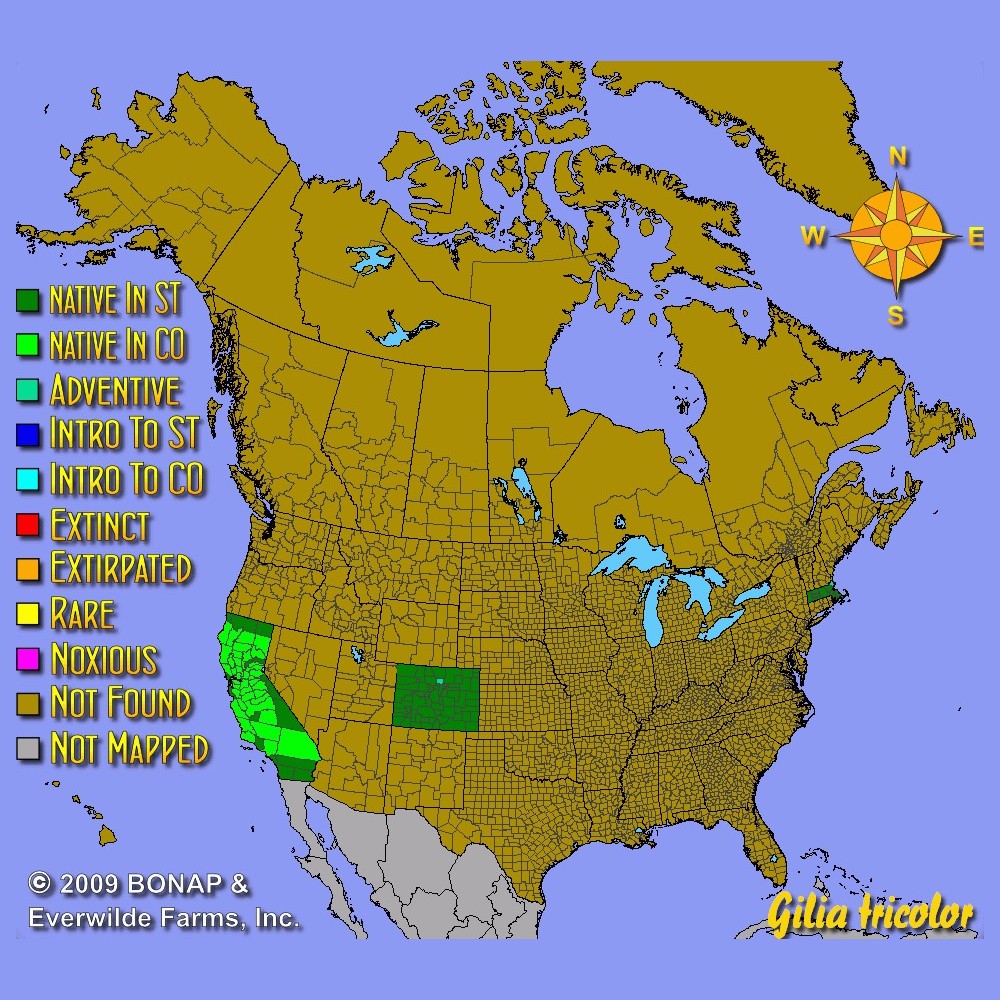Bird's Eyes Seeds
- HOW TO GROW
- FAST FACTS
- REVIEWS
HOW TO GROW
Sowing: Direct sow in late fall, planting just below the surface. For spring planting, mix the seed with moist sand and store it in the refrigerator for 30 days; direct sow. To start indoors, sow Bird's Eye seeds in a flat or individual peat pots 6-8 weeks before the last frost; keep the soil lightly moist and at a temperature of 70 degrees F until germination, which usually occurs within two weeks. When the weather has warmed and the seedlings are well established, transplant outdoors.
Growing: Keep the soil moist as the seedlings develop, which will happen rather slowly at first. Mature plants tolerate drought well, preferring hot and dry conditions; do not overwater, since this can cause disease. This plant adapts well to areas with rocky or sandy soil. It will self-sow, and is extremely attractive to butterflies and bees.
Harvesting: For fresh flowers, cut long stems of flowers that have just opened and place them in water immediately; strip the leaves that will fall below the water.
Seed Saving: After blooming, the flowers will become dry capsules that open to reveal several brown seeds; cut the ripened heads or simply shake the entire plant over a container to remove the Gilia Tricolor seeds. Store the cleaned Bird's Eye seeds in a cool, dry place.
FAST FACTS
Common Names: Bird's Eyes Gilia
Latin Name: Gilia tricolor
Species Origin: US Native Wildflower
Type: Native Wildflowers
Life Cycle: Annual
USDA Zones: 1, 2, 3, 4, 5, 6, 7, 8, 9, 10, 11, 12
US Regions: California, Mountain, Arid/Desert, Plains/Texas, Midwest, Northern, Northeast, Southeast
Seeds per Ounce: 65,000
Stratification: No Stratification
Germination Ease: No Stratification
Sunlight: Full Sun
Height: 16 Inches
Color: White, Pink
Bloom Season: Blooms Late Spring, Blooms Early Summer
Lovely small flowers with a beautiful color
I have grown these for years and love to order my seeds from Everwilde Farms. Always have great success getting them to come up and bloom. Very easy to grow and works wonderfully for pressing.
Came in time for planting despite my tardiness!
I'm not reviewing the seeds now, as they won't be planted here before snowmelt. However, I love the packaging, the photos on the packets, and the planting instructions on the back. I especially like the zip closures! If they germ well, they will be a good value, seed per dollar. They arrived surprisingly quickly considering all the seed websites are claiming COVID-19 delays. Thank you!
Hard to find these seeds
I'm saving them in my fridge for 2021 planting. Hard to find these seeds, hope they look as wonderful as the photo, thanks.
DESCRIPTION

HOW TO GROW
Sowing: Direct sow in late fall, planting just below the surface. For spring planting, mix the seed with moist sand and store it in the refrigerator for 30 days; direct sow. To start indoors, sow Bird's Eye seeds in a flat or individual peat pots 6-8 weeks before the last frost; keep the soil lightly moist and at a temperature of 70 degrees F until germination, which usually occurs within two weeks. When the weather has warmed and the seedlings are well established, transplant outdoors.
Growing: Keep the soil moist as the seedlings develop, which will happen rather slowly at first. Mature plants tolerate drought well, preferring hot and dry conditions; do not overwater, since this can cause disease. This plant adapts well to areas with rocky or sandy soil. It will self-sow, and is extremely attractive to butterflies and bees.
Harvesting: For fresh flowers, cut long stems of flowers that have just opened and place them in water immediately; strip the leaves that will fall below the water.
Seed Saving: After blooming, the flowers will become dry capsules that open to reveal several brown seeds; cut the ripened heads or simply shake the entire plant over a container to remove the Gilia Tricolor seeds. Store the cleaned Bird's Eye seeds in a cool, dry place.
FAST FACTS
Common Names: Bird's Eyes Gilia
Latin Name: Gilia tricolor
Species Origin: US Native Wildflower
Type: Native Wildflowers
Life Cycle: Annual
USDA Zones: 1, 2, 3, 4, 5, 6, 7, 8, 9, 10, 11, 12
US Regions: California, Mountain, Arid/Desert, Plains/Texas, Midwest, Northern, Northeast, Southeast
Seeds per Ounce: 65,000
Stratification: No Stratification
Germination Ease: No Stratification
Sunlight: Full Sun
Height: 16 Inches
Color: White, Pink
Bloom Season: Blooms Late Spring, Blooms Early Summer
Reviews
Review
Lovely small flowers with a beautiful color
I have grown these for years and love to order my seeds from Everwilde Farms. Always have great success getting them to come up and bloom. Very easy to grow and works wonderfully for pressing.
Review
Came in time for planting despite my tardiness!
I'm not reviewing the seeds now, as they won't be planted here before snowmelt. However, I love the packaging, the photos on the packets, and the planting instructions on the back. I especially like the zip closures! If they germ well, they will be a good value, seed per dollar. They arrived surprisingly quickly considering all the seed websites are claiming COVID-19 delays. Thank you!
Review
Hard to find these seeds
I'm saving them in my fridge for 2021 planting. Hard to find these seeds, hope they look as wonderful as the photo, thanks.






